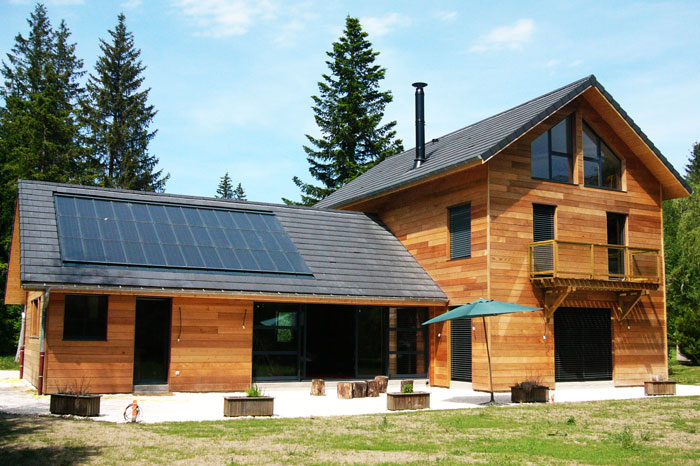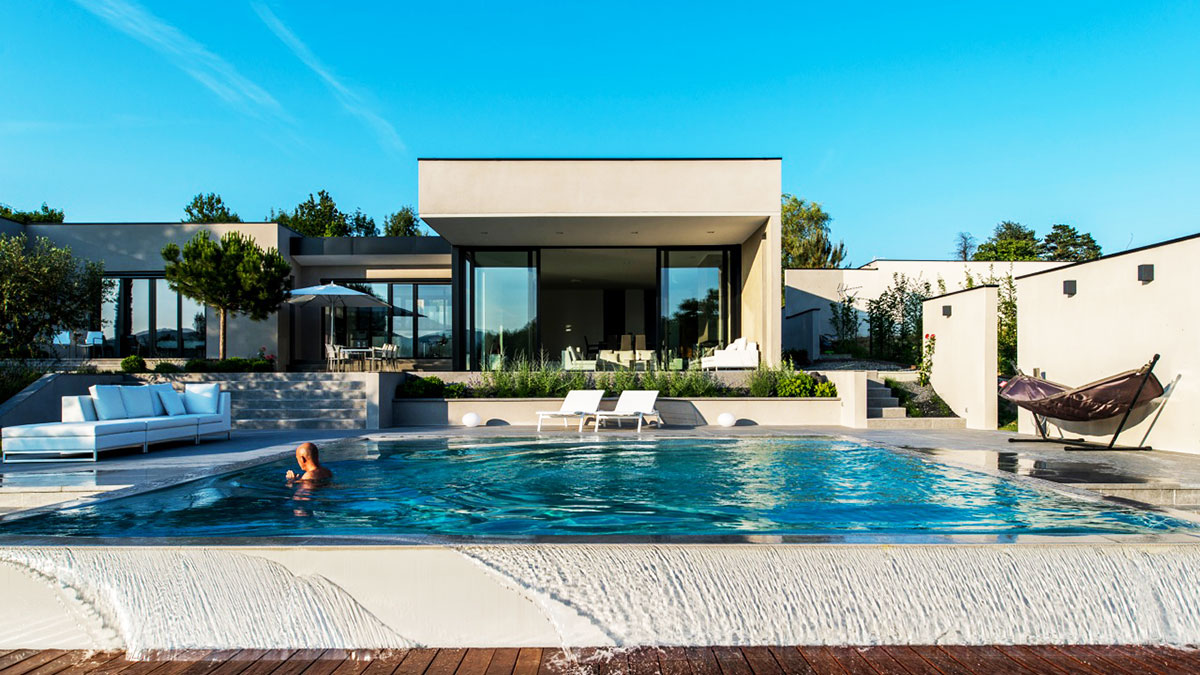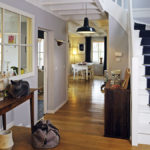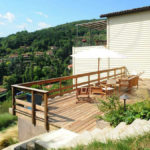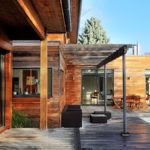The modern style expressed in contemporary house architecture refers to the purification of forms, colors and materials, the use of numerous bay windows and windows with original shapes, as well as an interior architecture focusing on space, luminosity and the opening on the outside. Applied to different urban, rural or natural environments, contemporary architecture creates a new aesthetic contracting with traditional urban spaces.

Aside from the goal of creating an original architecture, and large interior volumes that provide strong visual impressions, a contemporary house cannot neglect the comfort and ergonomics for inhabitants in the interior of the house. A truly modern design combines aesthetics with the imperative of well-being, as well as the desire to save energy and the respect for the environment.

Volumes and spaces of a contemporary house
Originating from an new vision or a reinterpretation of traditional architecture, a contemporary house is characterized above all by beautiful volumes and the opening of large spaces in simple but ambitious geometries. Indoor spaces are connected to the outside through an original relationship with the land and the natural environment: gardens, terraces, swimming pools, patios, flat roofs, cantilevered elements, covered outdoor spaces.
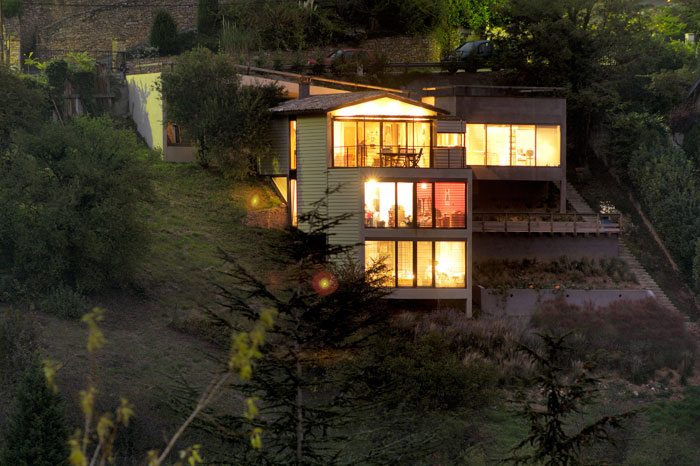
The use of large openings, zenith lighting, large windows, sometimes with unusual shapes, giving onto large living rooms with great heights in connection with the outside, creates a particular luminosity and new perspectives on a transfigured environment.
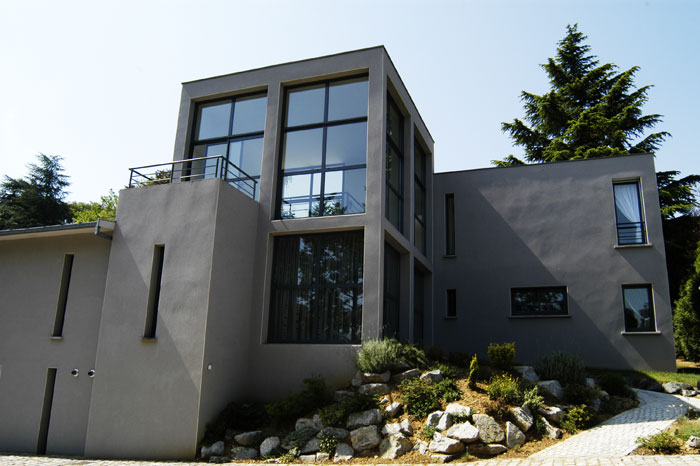
The definition of different “blocks” according to their arrangement or their levels and their articulations through the contrast of volumes, purified lines and minimalist forms, modifies the perceptions of everyday life. Contemporary architectural design strongly influences life in a new form of living in linked to the home, and occasionally also integrated with professional activities (workshop, medical practice …).

The materials of a contemporary house
The purification of the lines and the contrast between the different volumes of a contemporary house is usually reinforced by a particular use of materials and colors. It can be achieved, for example, by a monochrome approach with design in a single material, in the case of modern wooden houses.

The aesthetic opposition of different facades, levels or wings of a house, in the exterior, as well as between day rooms and night rooms inside can be accompanied by different materials. A wooden cladding in opposition to a concrete volume, the use of coated or painted masonry that contrasts with raw materials, stone, glass or metal, etc., are architectural approaches that make it possible to add value to a certain elements, materials, or functions, and reinforce the modern character of a house.
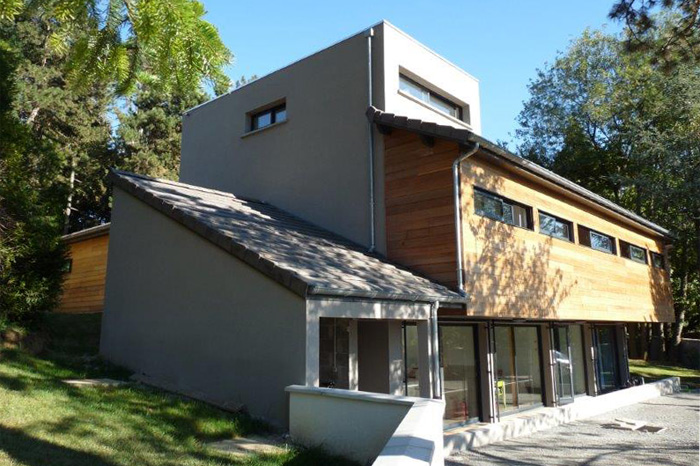
The contemporary house and its environment
The environment often plays an important role both inside and outside of a contemporary house, both in aesthetics and in ethics. The contemporary house is an envelope which, in many aspects, is translucent between the inside and the outside, and lets the light enter and the gaze go out.
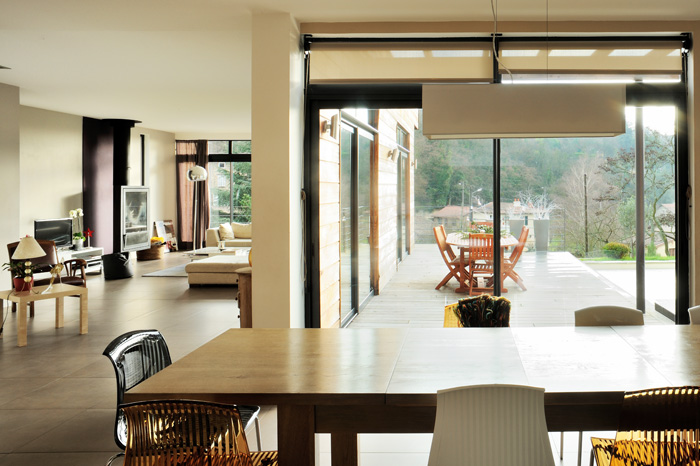
In harmony with the environment it enhances by a frank contrast (shapes and materials) or in which it melts (house built on a sloping or exiguous land, windowed facades, courtyard) or hides itself (green roof, “buried” house), a well-designed house can also take advantage of an exceptional panorama over a great landscape (view on the sea, nature or city) or of a natural or urban environment (opening onto a garden or a park, different levels on a slope, creation of patios).
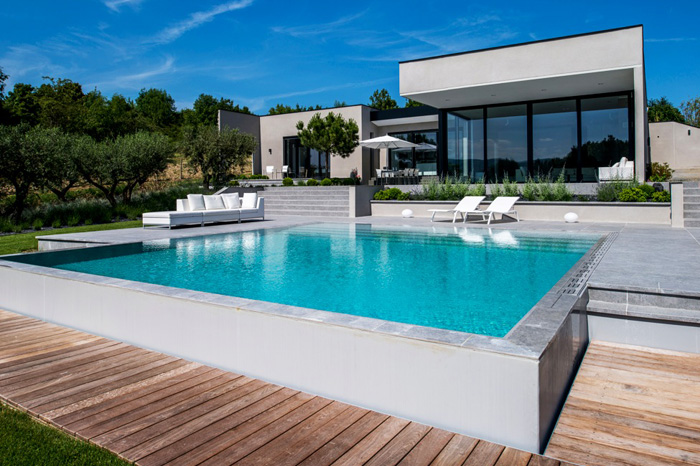
From the point of view of respect for the environment and the reduction of energy requirements, the design of a modern house also focuses on sustainable architecture practices, and the use building materials that do not harm the environment and its occupants, or do not emit CO2.
